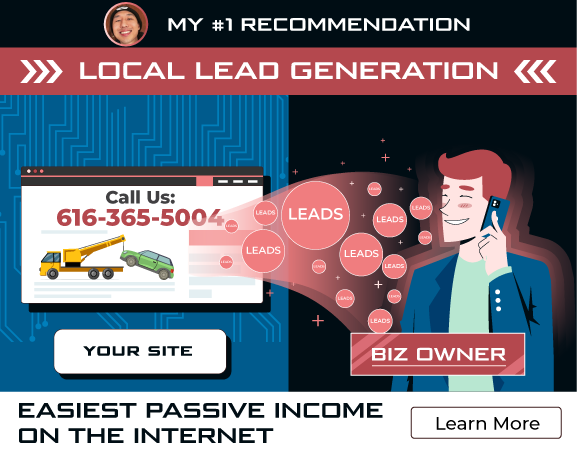
Why do most online businesses fail? Here are some of the main reasons you can fail:
- Lack of basic business knowledge
- Failing to commit to your business
- Operating a poorly developed website
- Skipping marketing research
- Not adapting to the fierce competition
- Not setting goaps and milestones
- Not creating SOPs
- Lack of good customer support
- Not taking action
- Not adapting with marketing changes over time
90% of online businesses fail in their first 120 days of operation. The main reasons for this are not doing enough research, underestimating the competition, and failing to adapt to the ever-changing online landscape. Online business differs greatly from offline businesses. That’s why if you’re a business owner or an entrepreneur, knowing why most online businesses fail and how to avoid it is a crucial step for success.
In this article, we’ll inspect the 25 most common issues that lead to small business failure online. We'll look at why these issues are so critical, what happens when you ignore them, and the exact steps you can take to start a successful online business.
1. Lacking Basic Business Knowledge
Basic business knowledge helps you steer clear of mistakes like overspending or getting into legal problems. Too many aspiring entrepreneurs go in with the idea that online business is nothing like traditional business. While that is true to an extent, the fundamentals of starting and running a business are the same. Knowing these basic business concepts helps prevent business failure:
- Supply and demand
- Accounting principles
- Cash flow vs profits
- Target market pain points
- USPs - unique selling points
- Marketing fundamentals
- Business ethics
- Copyright and trademark laws
- KPIs (key performance indicators)
- Risk management
2. Failing to Commit to Your Business
Failing to commit time, effort, and money into your business is a big reason people fail. A lot of people start online businesses as a side hustle. It can work that way, but you should never have the mentality that it's just something on the side. You can do this by:
3. Operating a Poorly Developed Website
A poorly developed website paints your business as unprofessional. You can avoid this by giving your visitors a good user-experience (UX). According to Zippia, 88% of online shoppers don’t return to a website after a bad user experience. They also report that good UX increases a website’s conversions by 200%.
Good UX on your website simply means making it easy for people to find what they’re looking for. If you’re running an ecommerce website, this means making the whole checkout process simple. Notice how big companies like Amazon make the buying experience super easy with their 1-click checkout.
4. Skipping Marketing Research
Skipping marketing research allows you to find products that sell, and avoid over-competition niches. You can do this by identifying your target audience, finding their biggest frustrations, and then analyzing your competition.
5. Not Adapting to Fierce Competition
With around 12-24 million online businesses today, it’s impossible to avoid competition. If you don't differentiate your business, it's unlikely you'll survive. To challenge the businesses that are already operating, you can:
6. Not Setting Goals and Milestones
Setting goals and milestones ensures you don't lose focus bigger picture, and prevents burnout. According to Zipdo, one in every three entrepreneurs experiences burnout. It can be very difficult to push through hard times if you don’t even know where you’re going.
To counter this, you’ll first want to set a specific ultimate goal. It can be something as simple as “make enough money to travel full time.” Or a more ambitious goal like “become the biggest camping ecommerce store in the world.” Once you set your ultimate goal, you can then start creating milestones. Milestones are smaller achievements that show you’re on the right track to accomplishing your goal.
Sample Online Business Goal and Milestones
Business: SEO Agency
Ultimate Goal: Build an agency that runs even if you’re 100% hands-off
Milestones:
Get website up and running
Get first client
First $10,000/month
First $50,000/month
First $100,000/month
Finding and hiring a brilliant manager
Take a 1-month vacation with your business running in the background
First client where you’re 100% hands-off
7. Not Creating SOPs
Not creating SOPs (standard operation procedures) forces you to micromanage every single employee, or let them do whatever they feel is right. This creates inconsistency, which can frustrate customers. With SOPs, you can enjoy:
Many small business owners don’t feel the need to create SOPs. But if your plan is to scale and bring employees in later on, having these documents is vital for success. It’s a good idea to create these slowly as you go along, so that you can build upon your SOPs rather than having to write everything in one sitting.
8. Lack of Good Customer Support
Lacking good customer support is not only extremely frustrating for customers, but it can also mean missing out on sales. Zendesk published some alarming statistics regarding this:
- Over 50% of customers switch to a competitor after just ONE bad customer service experience
- 73% of customers switch to a competitor after several bad customer service experiences
- 75% of customers say a bad customer experience ruins their day
- More than 50% of customers say they feel stressed and tired when dealing with customer service
- Nearly 90% of customers say they'll switch to a competitor if it provides better customer experience
This highlights the importance of putting customers first, listening to customer feedback, and providing good customer support. And it's not enough to just hire any customer service rep either. Bad customer service representatives can cause just as much damage as having no customer service rep.
9. Not Taking Action
Failing to take swift action can lead to unhappy customers, the competition overtaking you, and losing sales.
10. Not Adapting with Market Changes Over Time
Failing to adapt to market changes is another big reason online businesses fail. Here are three of the biggest market challenges you need to adapt to today:
11. Selling a Poor Quality Offer
Selling a poor quality offer online is no longer something you can get away with in 2024. To avoid this, produce something solves a problem for your target audience. Below are some questions to ask about the quality of your offer. If you can honestly answer these with “yes,” then your offer is decent. If any of your answers is “no,” you should consider adjusting your offer.
12. Overpricing or Underpricing Your Product
To avoid overpricing or underpricing your product, find the actual cost of your product, then consider profit margins. Here's an equation you can use:
Target price = (Variable cost per product) / (1 - your desired profit margin as a decimal)
Variable cost per product includes raw materials, labor costs, overhead costs, and time costs (your per hour rate). For profit margins, 5% is considered low, 10% average, while anything over 20% is considered high.
Deduct your profit margin (as a decimal) from 1, then divide that by your variable cost per product. This will give you a target price. For example, if your variable cost per product is $20, and your desired profit margin is 20%, your target price will be
Target price = $20 / 0.8
Target price = $25
You also have to take the market price into account. You don't want to overprice your product because you'll have a hard time getting customers!
Service businesses are much easier to price. You just have to figure out an hourly rate that works for you.
13. Poor Inventory Management
Overstocking or understocking your inventory leads to loss of sales or cost overruns. Here are some ways to improve inventory management:
14. High Shipping Costs
You can reduce your shipping costs by using flat rate shipping, reducing the weight of your product, and using third-party insurance.
15. Not Investing into the Right Digital Marketing Strategies
The best way to gain customers online is investing in digital marketing strategies like SEO, social media, or email. It’s a good idea to focus on one or two when starting out. Each of these online marketing strategies has pros and cons:
16. Not Utilizing SEO
Making SEO tweaks like targeting good keywords, hitting search intent, and adding your keyword to the right places helps new customers find you. Here are some small changes you can make to get more website visits:
Even if SEO isn't your main marketing strategy, these small tweaks can help a lot. It takes 6 - 12 months to start ranking for keywords. But once you rank, you can enjoy organic traffic and leads on autopilot!
17. Having No Social Media Presence
Having a social media presence shows professionalism, allows people to contact you easily, and can gain new customers. Here are some tips to get started:
18. Lack of Proper Branding
Proper branding separates you from competitors, helps attract new customers, and builds brand loyalty. You can do this by choosing your logo, colors, and styles of your website. It’s also important to come up with a strong vision and mission message that resonates with your target audience. Here are some examples of good branding:

Designer: Coffee is one of the most competitive industries today. Alfred Coffee built a successful business thanks to their strong following. Alfred Coffee uses their unique designs to build brand loyalty. This works since their customer base is in Los Angeles, a hub for art and culture. In every aspect of their business and online presence, you’ll find their catchy artwork. Alfred Coffee has several physical locations, but they also sell coffee beans, mugs, and other accessories online.
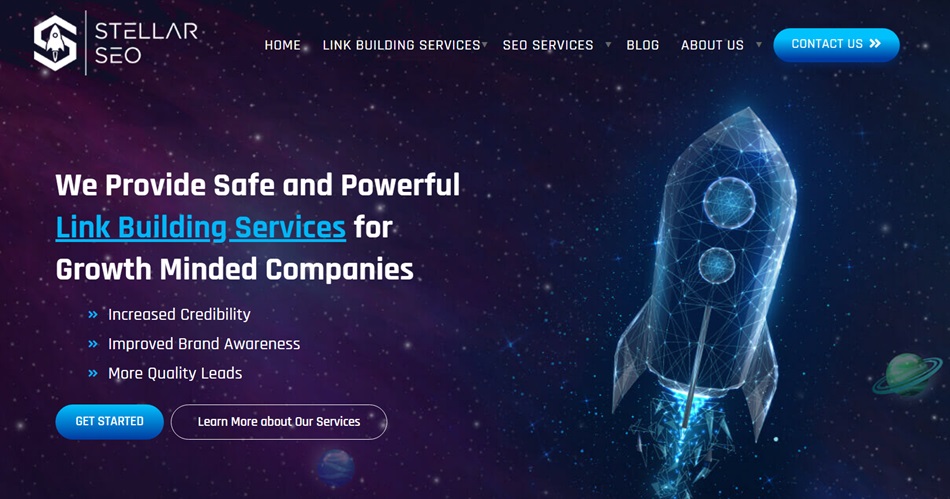
Futuristic: Stellar SEO leans heavily into their futuristic branding. Their target audience is “growth-minded companies.” Nothing captures this mindset as well as a neon rocket shooting through outer space. This branding works extremely well since SEO and link-building are strategies that many traditional businesses will feel are very futuristic.
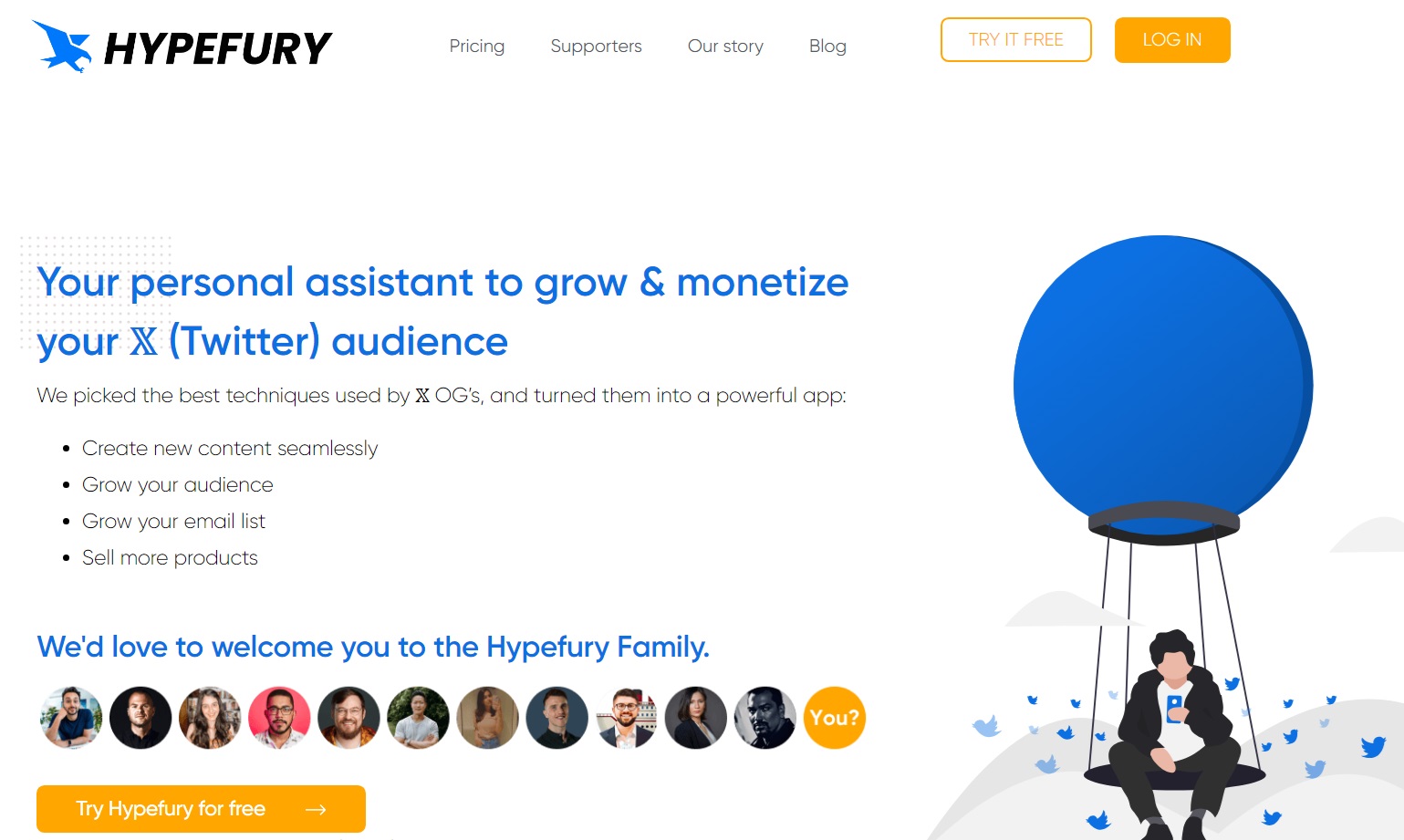
Familiarity: Hypefury is a SaaS tool to help people grow and monetize on X (Twitter). This is why they chose branding that’s very similar to Twitter’s. They want their target audience to feel at home in their platform. They use blue as their theme color, and a bird as their logo, two things people attribute to Twitter.
19. No Customer Retention Strategy
According to HubSpot, acquiring new customers is 5x more expensive than retaining customers. There’s also a 60 - 70% chance of selling to existing customers. Whereas the conversion rate for new leads is only 5 - 20%. Here are a few strategies you can use to keep customers better:
20. Underestimating the Time Commitment
The time to become successful online varies on how many hours a day you work, your industry, your niche, and more. Here are some examples of how long it took to become successful for popular online business models:

Ecommerce: Henrik Powers on Reddit says it took him around a year to get $30,000 in revenue. He also goes over how much he had to invest into his business to make it work. Henrik says ecommerce is a numbers game, and those with more capital can gain success faster.

Digital Marketing Agency: Starting a digital marketing agency requires very little overhead. However, it’s a business that requires a lot of skill to work. Ggildner on Reddit says his agency was profitable from the first month of operation. But he also says it largely depends on your skills and communication.
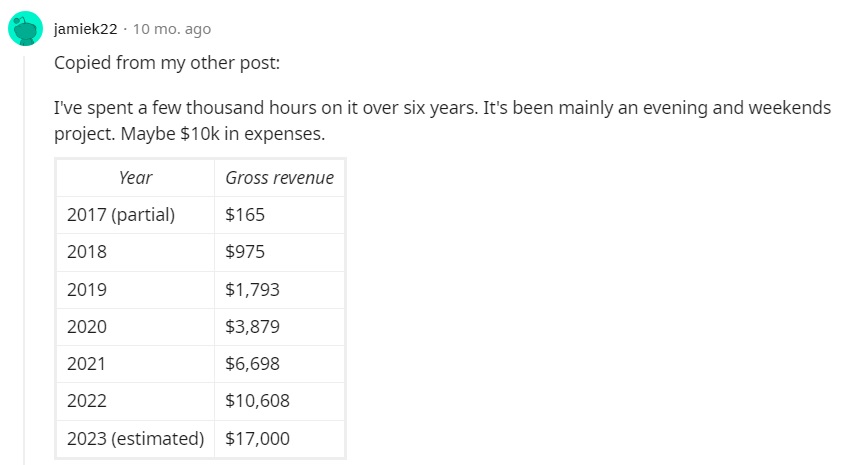
SaaS: SaaS is a business model that largely depends on how good your idea is. It’s also a business where having more developers allows you to build bigger and better products. That said, JamieK, a solo programmer, shared his earning progression from his SaaS side hustle on Reddit. It took him 5 years to break into 5-figures/year.
21. Not Tracking Data and Adjusting to It
Tracking your data like ROI, CAC, CLV, Churn Rates, and demographics helps you adjust your strategy accordingly. This helps you avoid inefficiences, lost sales, and overspending.
22. Not Optimizing for Mobile
According to Exploding Topics, 55% of website traffic comes from mobile. And 73.1% of web designers say non-mobile-friendly design is why people leave a website. All of this points to the importance of optimizing your website for mobile.
The good news is that optimizing for mobile is easy. Most website platforms today, like WordPress, are mobile-friendly by default. Unless you customize your theme, it should work perfectly on phones. If you want a highly customized website, it’s best to hire a web developer to ensure it runs well on mobile.
23. Starting with Insufficient Capital
Many aspiring online business owners don’t calculate their cash inflow and outflow properly. You need to calculate the cost of running a website, the tools you’ll use, any employee you’ll hire, and your marketing expenses. Some online business models allow you to start with very little overhead. However, you’ll still have to include your monthly living expenses if you plan to do this full time.
24. Relying on a Single Revenue Stream
Relying on a single revenue stream for online business is a bad idea because a single revenue stream can get wiped out overnight. That’s why once you’ve built up income, diversifying is critical. Here are some popular ways online businesses can diversity:
25. Hiring The Wrong Employees
Hiring the wrong employees is expensive, time consuming, and can damage your brand. You can improve your hiring process by:
How Can Online Businesses Avoid Critical Issues and Succeed?
Proper research, studying data, and adjusting strategies is how online businesses can avoid critical issues and succeed. A lot of the reasons online businesses fail is because of improper research. People find a shiny idea, then try to make things work without studying it first. They also go in unaware of the many pitfalls in their way. By reading this article, you’re now aware of what you need to look into before starting.
Studying data is crucial for long-term success. No matter how well you research, there are going to be surprises in your journey. That’s why it’s so important to collect data - these are the raw stats that make or break your business. It will show you what’s working and what isn’t.
Adjusting your strategies is the response to studying data. Analyzing data is no use if you don’t take action. When you find something isn’t working, you need to change it. When you find something is working, give it more attention. Business plans are there to provide a roadmap, but you should always stay flexible to succeed.How Many Online Businesses Fail?
About 1,470,150 online business fail every year. It’s difficult to get the exact number. The US Chamber of Commerce reports 5.5 million new business registrations. Zippia says 29.7% of businesses do business online. And multiple sources say 90% of online businesses fail in their first 4 months, which brings the number to roughly 1,470,150.
Which Online Business Has the Highest Rate of Failure?
Affiliate marketing has the highest rate of failure for online businesses at 95%. Most affiliate marketers fail because of high competition, bad niche selection, and producing low value content and websites.
Because the barrier of entry for affiliate marketing is so low, so many people jump on this business. The cost to get started is low, and the potential profits are high. This is why every niche is packed with affiliate marketers. This is also why finding a good niche is now very difficult. Finally, too many people think that affiliate marketing is the same as it was 5 years ago. Back then, you could produce low quality content and still win keywords and make affiliate sales. Today, that is no longer the case.
How Long Do Online Businesses Last?
Online businesses last 3 - 5 years on average, with the best online businesses lasting 9 - 10 years. Of course, this depends on what type of business you’re running. Keep in mind that these numbers are for successful online businesses. The 10% that get past the first 4 months of operation.
3 Online Business Failure Examples
Example #1: Davie Fogary's Ecommerce Business

Davie Fogary started Calming Blanket in 2018, and it became one of Australia’s fastest growing ecommerce stores. Calming Blanket sold weighted blankets, something that wasn’t common yet. He gained $1,000 in pre-orders on his first month, which instantly showed that he struck gold. In his first year, Davie Fogary made 1.5 million AUD in profits. The following year, this went up to 2.5 million.
However, Calming Blanket eventually ran into fresh problems. Big retailers began selling their own weighted blankets for much lower prices. Davie overstocked his inventory, leading to plenty of wasted expenses. Apple changed their privacy policy, making paid ads on Facebook more difficult. Fogary also expanded his team too quickly, which led to high expenses and inefficient output.
Davie Fogary encourages new online businesses to strengthen good business processes. He says avoid shiny objects, and stay focused on core business strengths.
Example #2: Daniel Midson-Short's Tech Startup

Daniel Midson-Short shared the story of his failed tech startup on YouTube. He and a few partners set out to create a healthcare app from scratch. Daniel says he was dreaming of becoming a tech billionaire. He gave up his job and invested $60,000 - $70,000 of his own savings into the project.
However, the project ran into many problems early on. Each member of the startup had different goals and work ethics, which slowed the project down. And after two and a half years, it was clear the app was going nowhere.
Despite this, Daniel doesn’t regret his decisions. He encourages his viewers that going for a business idea is worth it, even if it fails. He also warns people to make sure they’re enjoying what they’re doing. He says that the allure of becoming a tech billionaire was the reason he did this gig, not that he enjoyed the job.
Example #3: Aira's Etsy Store

Aira’s Etsy store got banned after she sold copyrighted merchandise. When she first started, she was very careful to avoid replicating big brands like Disney or Pokemon. However, as competition rose in Etsy, she began venturing into grey areas. Aira started selling merch with popular musicians like Taylor Swift. Universal Music sent a copyright notice to take down this merchandise. However, she failed to remove everything, leading to her ban from Etsy.
After the ban, Aira lost all her income from Etsy. She also had to pay legal fees for copyright infringement. She is currently starting a new business outside of Etsy. However, this failure story is a clear warning to study the copyright and trademark laws. Many online business owners think they can get away from this, but it’s unwise to risk it.
What Can You Do If Your Online Business Fails?
If your online business fails, you can either cut your losses and move on or change your entire strategy. Whatever the case, it’s very important to first diagnose why you failed. This can be a very emotional time, but try to come up with logical answers. This way, you can better decide which course to take.
If you find that the business idea was not good from the get go, it makes sense to abandon it. It's difficult to let go, especially if you’ve invested lots of time and money into the project. But forcing the issue with a bad business idea will only drag you further down. Like Daniel Midson-Short’s failure story, use this as a learning opportunity.
If you find that your execution was the problem, you can re-strategize and try again. Do a deep analysis and find everything that isn’t working. You may have to learn new skills or bring in new employees to help out. Like Davie Fogary’s story, strengthen your business processes and set realistic expectations.
Can Online Business Failure Be a Good Thing?
Yes, online business failure can be a good thing because it’s a tremendous learning opportunity. Online business is not something you learn by reading books, blogs, or courses. Those can help, but the real learning happens when you start. Very few small business owners get it right the first time they try. Most people have to fail several times before they become successful entrepreneurs. That’s why you should never let the fear of failure hold you back from starting.
Conclusion: How Risky is an Online Business?
90% of online businesses fail. There are countless online business failure stories online. And so many people return to their corporate jobs in defeat. And yet, the rewards of starting a successful online business far outweigh the risks. Which is why millions of people still try despite the odds. However, there are ways that you can better your chances of success. One of these is to go for a low-risk business model like local lead generation.
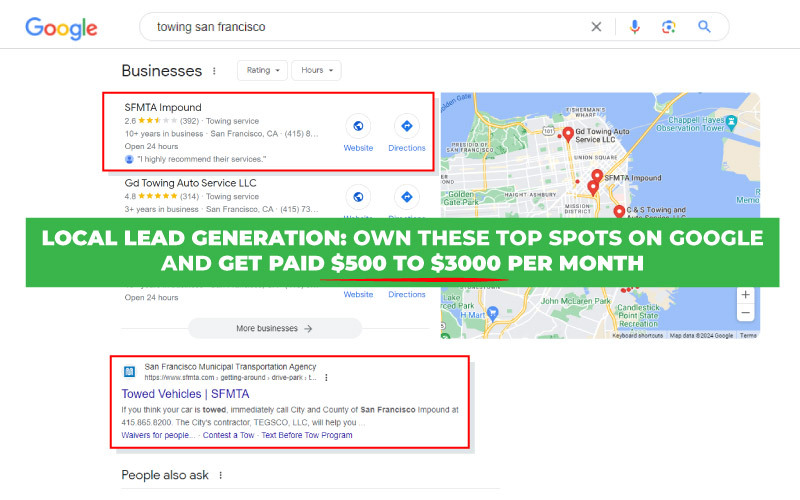
Local lead generation works by building and ranking websites and then renting them to local service businesses. The risks are low since there are little upfront fees and you can start this as a side hustle. Once your website is ranking, you can easily rent it to service businesses for $500 - $3,000/month. Finally, local lead generation has far less competition than other online business models. There are over 41,000 ZIP codes in America alone, and hundreds of service businesses to choose from! This model allows for scalability as you can expand your portfolio of rented websites across various industries and locations, increasing your passive income potential over time.

